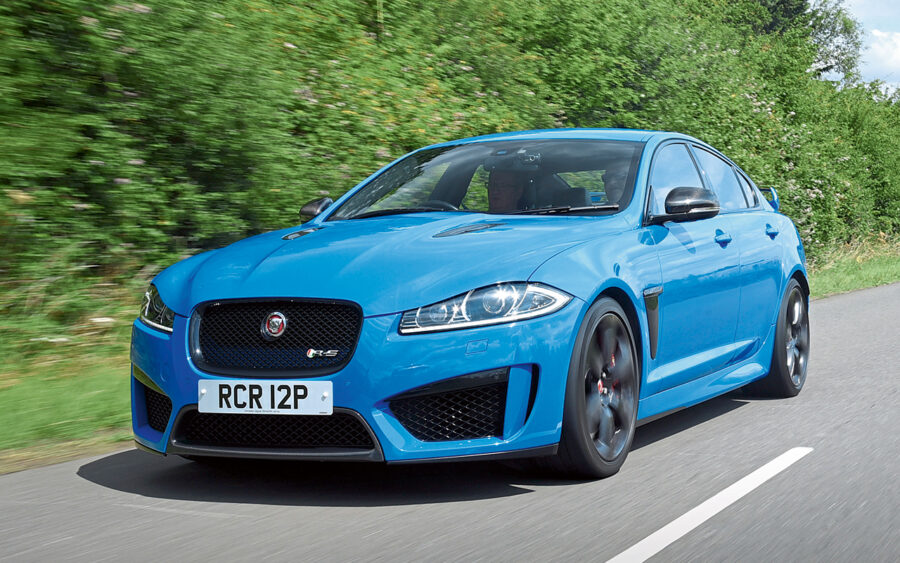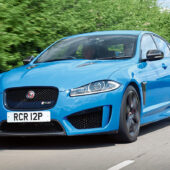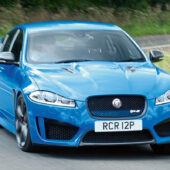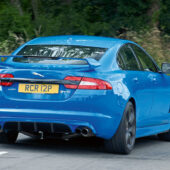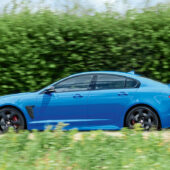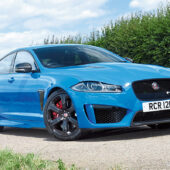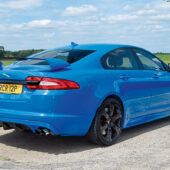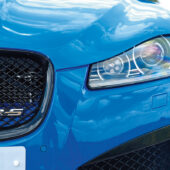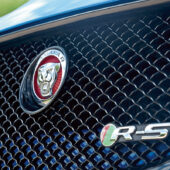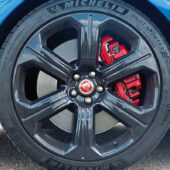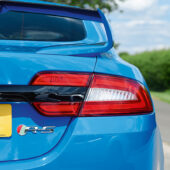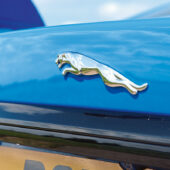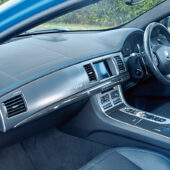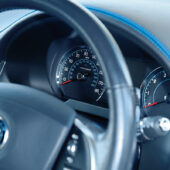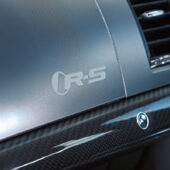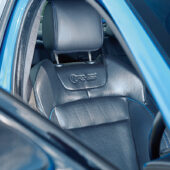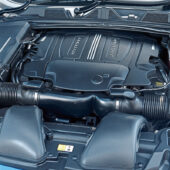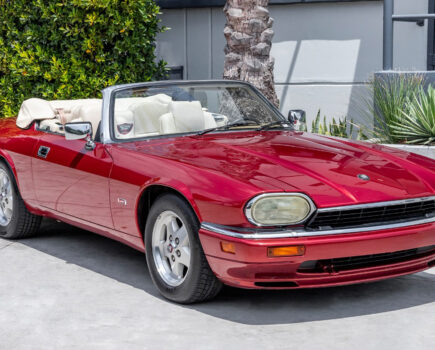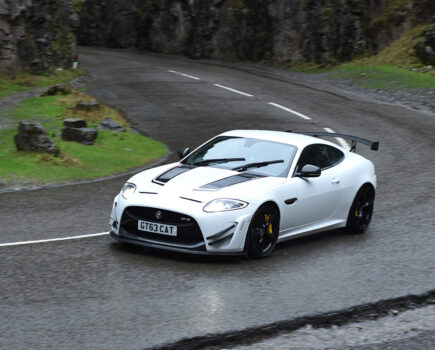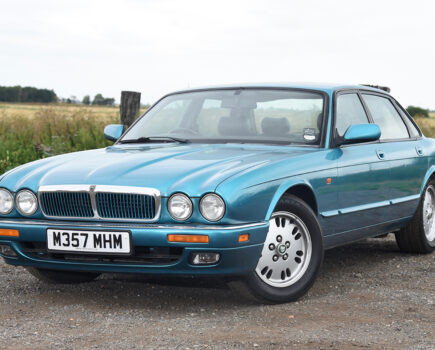The Jaguar XFR-S was a high point in the brand’s illustrious performance saloon history. We get behind the wheel to see what 273bhp per tonne feels like
Words: Paul Wager Images: Paul Walton
Work on car magazines (and websites) for long enough and it’s inevitable that you will have some weeks where the variety of machinery you find yourself in is somewhat varied to say the least. And so it was that in the course of a single week I found myself piloting everything from a century-old Austin 7 to an electric car from an as-yet unknown maker, while somewhere between these two landmarks sat a hybrid Toyota company car, Honda S2000 and the Jaguar XFR-S you see here.
It wasn’t until afterwards that I realised that this oddball selection of cars neatly encapsulated a century of progress in the automotive world, from straight petrol to the hybrid half-way house and the all-electric future. For Prestige and Performance Car readers – and anyone with even the slightest petrolhead leanings – it’s the Jaguar which stands out as the highlight, its 273bhp per tonne eclipsing even the frantic Honda roadster.
For those unfamiliar with the significance of that single ‘S’, it can loosely be encapsulated as the regular XFR turned up Spinal Tap-stye to 11 and it’s unlikely we’ll see its like again. Which is a great shame, since this single model showed just how great Jaguar can be when it’s on top of its game and when the brief is not only to challenge the established German players but to beat them at their own game.
At a glance it’s easy to be confused by the XFR-S, the low production run, general rarity and the lairy appearance – especially in the French Racing Blue of Rob Crisp’s example in our photographs – suggesting it might be a homologation special, the work perhaps of the kind of after-hours skunk works teams which created some of the greats from automotive history like the original Golf GTI and BMW’s lunatic M Roadster.
But no, the XFR-S is a properly developed and very much fully engineered product which just a single drive will tell you doesn’t need to make any excuses to anyone.
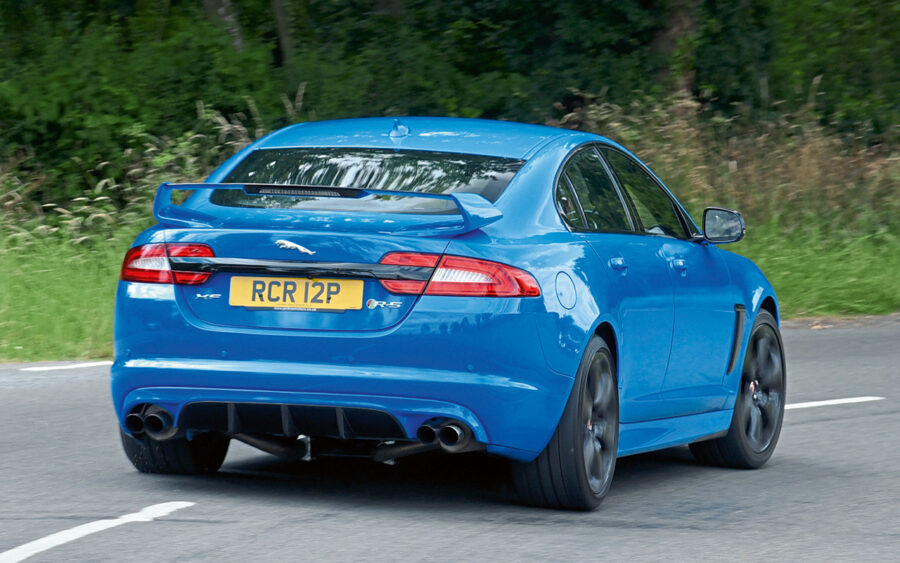
On its introduction back in 2013, Jaguar’s then chief engineer for vehicle integrity, Jesse Cross suggested that it represented simply a logical extension of the recipe which created the XFR – sharper, more responsive and yes, more powerful. Oh and louder, too – but not excessively so, since in Cross’s own words at the time, that “wouldn’t have been very Jaguar.”
Quite what does constitute ‘very Jaguar’ is open to debate of course, but the wings and spoilers of the R-S are a long way from the average XF quietly slipping past discreetly in its sober metallic paint. In fact the car’s extrovert appearance hails more from the era of Escort Cosworth and Lotus Carlton – and speaking as a former custodian of the Ford, I’d say that’s something very much to be celebrated.
Poring over this car during our photo shoot it’s fascinating to discover the little details which are part of the S makeover. Some we knew about, others need a keen owner like Rob to point them out, like the vestigial spats on the trailing edge of the rear arches. You only find them on the S and they’re there to stop the fat 10-inch wheels spraying the rear haunches with grit and road dirt.
It’s the same on the inside too, with the cabin familiar from regular high-spec XFs but with touches to let you know you’re in something special, like the alcantara headlining and dash trim, the blue piping on the seats and of course the RS logo in the leather.
Stunning though the cosmetics may be, this was no spoilers-and-stripes special edition and the heart of the XFR-S was the drivetrain upgrades. Under the front sits the supercharged JLR V8, familiar from the regular XFR, itself no wallflower but in R-S form boosted from 503bhp to 542bhp, while torque is up from a handy 461lb.ft to a hefty 502lb.ft.
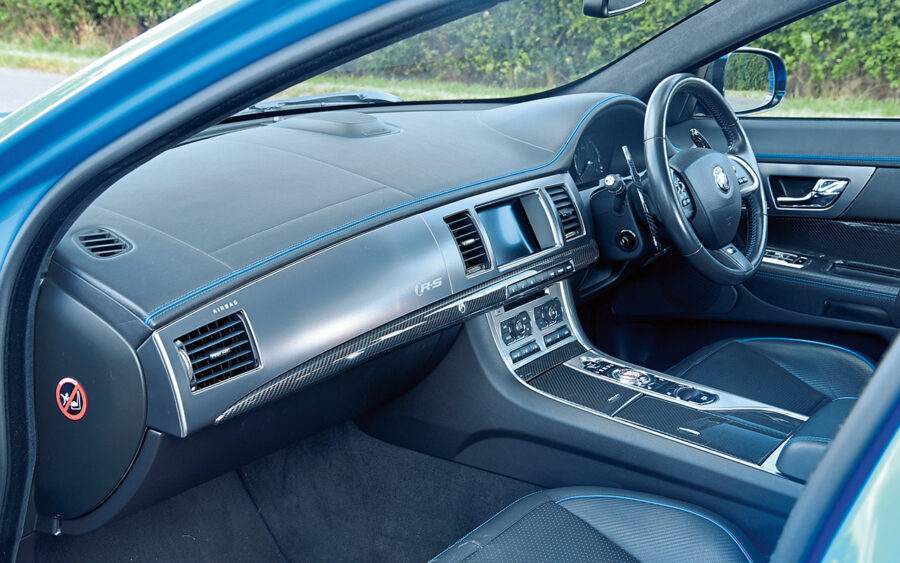
Behind it sits what is essentially the gearbox of the F-Type, at the time a new arrival. Unlike the rival Mercedes-AMG E63 and BMW M5, both of which employed dual-clutch sequential manual boxes, Jaguar went the conventional torque converter route with a ZF 8HP70 box and contemporary road testers at the time were divided over which they preferred.
Yes, the dual clutch technology has matured to a point where the jerky and indecisive changes of early DSG-shifted Audis are a distant memory, but the torque converter automatic has enjoyed nearly a century of progress and still has a lot to recommend it. This particular eight-speed unit is referred to by Jaguar as a ‘Quickshift’ box and with ZF quoting a shift time of just 200 milliseconds it certainly lives up to its title on the road – indeed, testers back in the day reckoned it was faster to react than the seven-speed Mercedes dual-clutch unit.
Also borrowed from the F-Type were the front uprights, sprung slightly more firmly than the regular XFR and naturally matched at the rear, which also received revised bushes. Perhaps surprisingly, the dampers were unchanged but revised power steering valving translated to a heavier feel at the rim and a greater road feel. The final link between driver and tarmac was a tyre specially developed with Pirelli for the XFR-S, a variant of the P-Zero line in 265/35 front and 295/35 rear flavour although this example runs Michelin’s Pilot Sport.
At the time of the car’s launch, magazine road tests inevitably majored on tyre-smoking drifting antics and to be fair, that was a talent well within the capabilities of the R-S, but for the majority of buyers its appeal was that it was a most unlikely Jaguar which could stand up as a viable alternative to AMG and M Power über saloons and looked the part, too. The fact that it was around 10 per cent more expensive than its rivals we can simply overlook today.
It still stands up today, too. Yes, from the outside the vivid French Racing Blue of Rob’s car combines with the carbon details to make it very obviously something special yet on the inside it’s all very calm and collected.
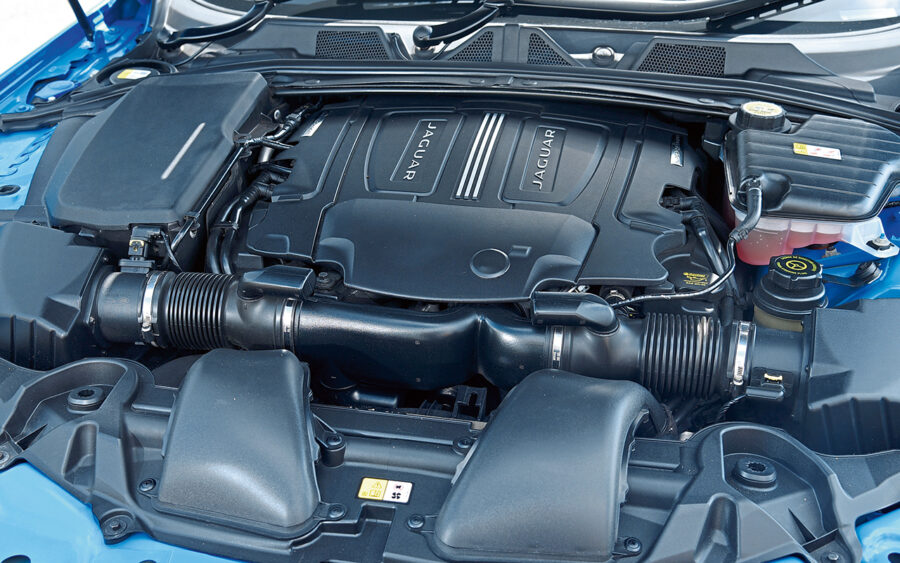
As I passed back and forth for action shots, Rob commented – with a grin, luckily – that he’d never actually heard his own car being driven in anger before and that illustrates perfectly the refinement which the R-S boasts. From the outside, the supercharged V8 has a busy, almost motorsport bass beat to its idle, yet on the inside the sound is impressively muted – well it ‘wouldn’t be very Jaguar’ to have a noisy cabin, would it?
It does have the edge on its immediate rivals though, the BMW and Mercedes both employing turbochargers which inevitably kill the engine note of a performance car in a way the Jaguar’s supercharger doesn’t.
I’ve often found that even hardcore performance cars can be judged more accurately by their behaviour at lower speeds, bouncing over urban potholes and crawling in traffic than they can at full chat – after all, anyone can make a car go savagely fast down a drag strip, but it takes proper engineering to make the same vehicle civilised on the school run and a busy M25.
And in this respect, the XFR-S passed with flying colours while manoeuvring for our photos. The heft of the V8 and that torque converter automatic combine to create a car which on a gentle throttle simply feels eager and nicely poised, no harder to live with than a regular cooking XF. Give it an exploratory prod and it certainly feels lively but it’s not until you really give it a proper stab that the difference between R and R-S emerges. The XFR is no slouch but the R-S adds an extra degree of responsiveness which makes it seem like a completely different animal – and also gives it a personality which the rather sober and clinical BMW M5 can’t match.
Accelerating hard in the XFR-S gives you just enough of a glimpse of the lunacy which would have resulted if the car hadn’t been so completely developed and it puts a smile on your face, all the while feeling secure in the knowledge that this is a very capable package.
Impressively, despite the bright blue paintwork, the spoilers and the snarling V8 exhaust, the R-S even on its fat 20-inch wheels, still rides beautifully. Now there’s something that is very much Jaguar.

